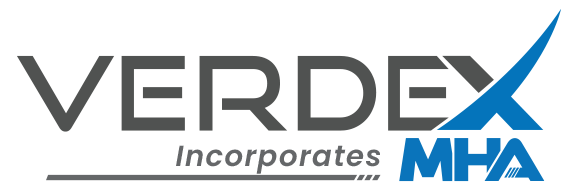The Essential Safety Equipment for Every Workplace
Date Posted:29 October 2024
By equipping your team with the correct tools, you can minimise accidents and create a safer, more productive environment. We discuss the top 9 essential safety equipment items that every workplace should consider.
Safety in the workplace is an absolute priority. Whether you're operating in a construction site, a warehouse, or an office, having the right safety equipment is essential to protect workers and ensure compliance with Australian safety standards. By equipping your team with the correct tools, you can minimise accidents and create a safer, more productive environment. Below, we discuss the top 9 essential safety equipment items that every workplace should consider.
1. Personal Protective Equipment (PPE)
Personal protective equipment (PPE) is a broad category that includes items such as helmets, gloves, goggles, face shields, and high-visibility clothing. These are designed to safeguard employees from hazards like falling objects, chemical splashes, or harmful dust. Depending on the industry, PPE might also include specialised gear like respiratory protection or hearing protection. Regular PPE checks and training ensure employees use it correctly and stay safe.
Every workplace must have a first aid kit that is easily accessible in case of emergencies. First aid kits should be stocked with basic items like bandages, antiseptics, scissors, and burn treatments. In more hazardous environments, the kit may need to include items specific to the risks present, such as eye wash solutions or specialised dressings. It's crucial that employees are familiar with the kit's contents and know how to administer basic first aid.
3. Safety Signage
Proper safety signage is an often-overlooked but highly effective way of preventing accidents. Clear signs should be placed around the workplace to indicate hazards, fire exits, and first aid stations. Warning signs for slippery floors, electrical risks, or areas where personal protective equipment is required are vital for guiding employees and visitors safely through the work environment.
4. Protective Barriers and Bollards
In industrial and warehouse environments, protective barriers and bollards are used to separate pedestrian zones from vehicle or machinery areas. They prevent accidents by keeping workers out of harm’s way, especially in high-traffic areas where forklifts, trucks, or other equipment operate. Barriers also offer protection from accidental impacts, safeguarding employees and equipment alike.
5. Emergency Showers and Eye Wash Stations
In workplaces where chemicals are handled, emergency showers and eye wash stations are essential. If a worker comes into contact with a hazardous substance, immediate flushing with water can prevent serious injury. These stations should be easily accessible and employees should be trained on how to use them in case of an emergency. Regular inspections ensure that these facilities are functional and compliant with safety standards.
6. Fall Protection Gear
For workplaces that involve working at heights, fall protection gear such as harnesses, lanyards, and anchor points is critical. Even when working on scaffolding or ladders, fall arrest systems can save lives by preventing or minimising the impact of a fall. It's important that workers are trained on how to properly wear and inspect their gear before use, ensuring their safety at all times.
7. Spill Kits
Workplaces that deal with liquids, particularly hazardous chemicals, should have spill kits readily available. These kits contain absorbent materials, protective clothing, and disposal bags to safely contain and clean up spills. Having a spill response plan in place and training employees on how to use the kits is crucial for avoiding accidents and protecting both the workforce and the environment.
8. Respiratory Protection
Respiratory protection is essential in environments where airborne hazards such as dust, fumes, or harmful chemicals are present. Respirators and masks come in various forms, depending on the specific hazard. For example, disposable masks might suffice in environments with low-level dust, while full-face respirators with filters are necessary in areas with toxic vapours. It's important to regularly inspect and replace respiratory gear to maintain its effectiveness.
9. Emergency Lighting and Exit Signs
In the event of a power outage or an emergency, emergency lighting and clear exit signs help guide workers and visitors safely out of the building. Exit routes must be clearly marked, and emergency lights should illuminate the paths to these exits. Regular maintenance of these systems is critical to ensure they function properly when needed most.
Conclusion
Workplace safety goes beyond complying with regulations—it’s about fostering a culture where employees feel protected and valued. By equipping your workplace with these top 10 essential safety items, you can significantly reduce the risk of accidents and ensure that your team remains safe and productive. From personal protective equipment to fire extinguishers and emergency exit signs, these items form the foundation of a safer work environment.
At Verdex, you’ll find an extensive range of workplace safety equipment tailored to various industries. Whether it’s high-quality PPE, reliable fall protection gear, or state-of-the-art fire safety tools, Verdex has you covered with everything needed to ensure your workplace stays compliant and, most importantly, safe.




























































































































 Trolleys & Hand Trucks
Trolleys & Hand Trucks Cage Trolleys
Cage Trolleys Cleaning Carts & Trolleys
Cleaning Carts & Trolleys Construction Trolleys
Construction Trolleys Hand Trucks & Dollies
Hand Trucks & Dollies Laundry/Linen Trolleys
Laundry/Linen Trolleys Lifting Trolleys
Lifting Trolleys Order Picking Trolleys
Order Picking Trolleys Panel Cart Trolleys
Panel Cart Trolleys Platform Trolleys
Platform Trolleys Powered Trolleys
Powered Trolleys Shelf & Tiered Trolleys
Shelf & Tiered Trolleys Stainless Steel Trolleys
Stainless Steel Trolleys Tool Trolleys
Tool Trolleys Utility & Service Carts
Utility & Service Carts Lifting & Handling Equipment
Lifting & Handling Equipment Forklift Attachments
Forklift Attachments Jib Attachments
Jib Attachments Lifting Hoists & Pallet Hooks
Lifting Hoists & Pallet Hooks Load Skates & Tow Tugs
Load Skates & Tow Tugs Manual Stackers & Lifters
Manual Stackers & Lifters Pallet Jacks
Pallet Jacks Pallet Lifters
Pallet Lifters Pallet Rotators & Dispenser
Pallet Rotators & Dispenser Powered Pallet Trucks & Electric Lifters
Powered Pallet Trucks & Electric Lifters Scissor Lift Trolleys and Tables
Scissor Lift Trolleys and Tables Conveyor Equipment
Conveyor Equipment Conveyor Frames & Stands
Conveyor Frames & Stands Roller & Skate Conveyors
Roller & Skate Conveyors Ladders & Access Equipment
Ladders & Access Equipment Container & Yard Ramps
Container & Yard Ramps Ladders & Step Stools
Ladders & Step Stools Work Platforms & Crane Cages
Work Platforms & Crane Cages Drum Handling Equipment
Drum Handling Equipment Drum Storage & Bunding
Drum Storage & Bunding Drum Trolleys & Lifters
Drum Trolleys & Lifters Forklift Drum Handling
Forklift Drum Handling Dangerous Goods Storage & Spillage
Dangerous Goods Storage & Spillage Aerosol Cans Storage Cages
Aerosol Cans Storage Cages Bunded Pallets & Storage
Bunded Pallets & Storage Corrosive Goods Storage Cabinets
Corrosive Goods Storage Cabinets DG Storage & Trolleys
DG Storage & Trolleys Flammable Liquid Cabinets
Flammable Liquid Cabinets Forklift Gas Storage Cages
Forklift Gas Storage Cages Site Storage
Site Storage Spill Kits
Spill Kits Waste Handling & Bins
Waste Handling & Bins Bin Lifters & Tippers
Bin Lifters & Tippers Plastic Waste & Wheelie Bins
Plastic Waste & Wheelie Bins Steel Waste & Tipping Bins
Steel Waste & Tipping Bins Waste Carts
Waste Carts Shelving & Storage Equipment
Shelving & Storage Equipment Heavy Duty Cabinets
Heavy Duty Cabinets Heavy Duty Shelving
Heavy Duty Shelving Mega Bins & Pallets
Mega Bins & Pallets Packing & Workbenches
Packing & Workbenches Pallet Racking Accessories
Pallet Racking Accessories Parts Trays & Stor-Pak Bins
Parts Trays & Stor-Pak Bins Pegboard & Louvre Panels
Pegboard & Louvre Panels Plastic Bins & Crates
Plastic Bins & Crates Plastic Handling Solutions Bins
Plastic Handling Solutions Bins Plastic Pallets
Plastic Pallets Stack & Nest Bins
Stack & Nest Bins Stillage & Transport Cages
Stillage & Transport Cages Workplace Equipment
Workplace Equipment Modular Workbenches
Modular Workbenches Electric Height-Adjustable Workbenches
Electric Height-Adjustable Workbenches Floor Matting
Floor Matting General Workplace Equipment
General Workplace Equipment Industrial Weighing Scales
Industrial Weighing Scales Packaging Machinery
Packaging Machinery Stationery Cupboards
Stationery Cupboards Storage and Stillage Cages
Storage and Stillage Cages Tool Trolleys
Tool Trolleys Tooling Cabinets
Tooling Cabinets Safety Barriers, PPE & Signage
Safety Barriers, PPE & Signage Barriers & Bollards
Barriers & Bollards First Aid Equipment
First Aid Equipment Gloves, Knives and PPE
Gloves, Knives and PPE Signage
Signage Cleaning & Site Supplies
Cleaning & Site Supplies Cleaning Equipment
Cleaning Equipment Cleaning Trolleys
Cleaning Trolleys Rubbish Bins
Rubbish Bins Signs & Traffic Supplies
Signs & Traffic Supplies Construction Equipment
Construction Equipment Construction Trolleys
Construction Trolleys Waste Handling
Waste Handling General Site Equipment
General Site Equipment Concrete Equipment
Concrete Equipment Site Storage
Site Storage Lifting Equipment
Lifting Equipment Verdex Specials
Verdex Specials










